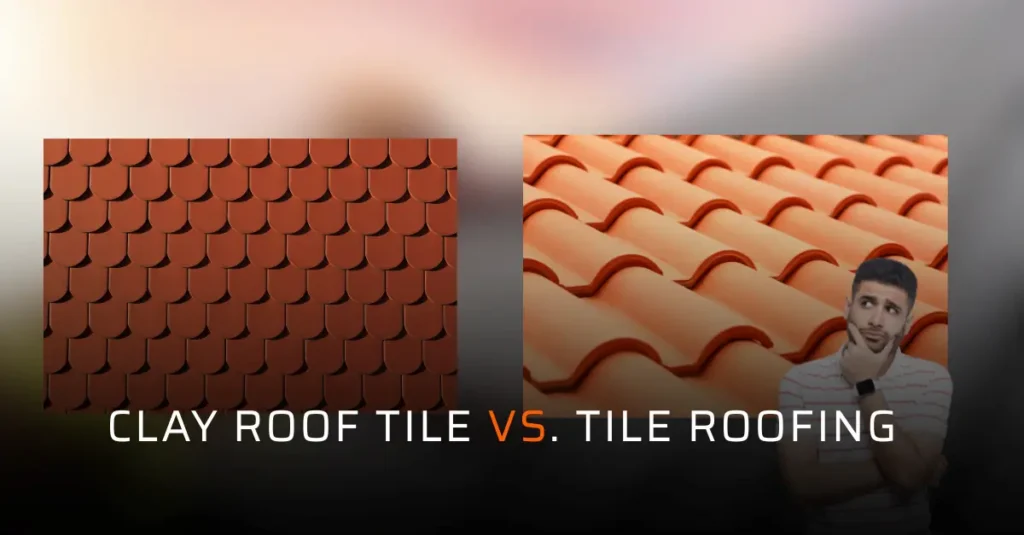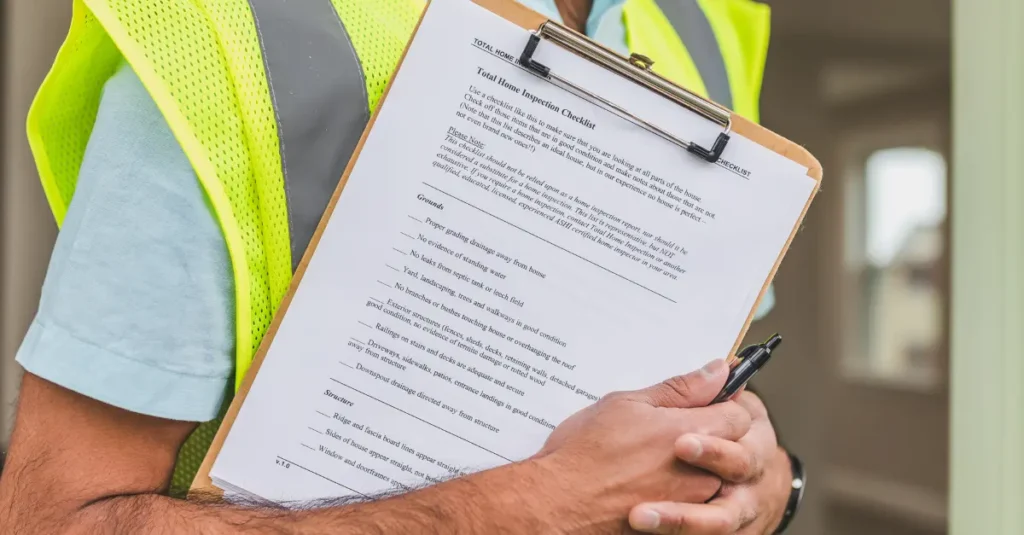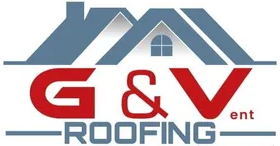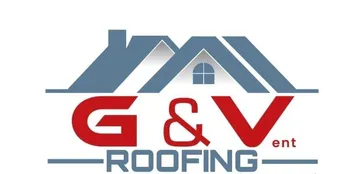
Roofing systems in Long Island must resist heavy storms, salt air, and freeze-thaw cycles. Choosing the right tile affects home durability, energy efficiency, and resale value. Local building regulations and architectural styles also play key roles.
Main roofing options include
- Clay roof tiles—fired natural clay, long-lasting and visually appealing.
- Concrete tiles—molded cement-based, cost-efficient, but heavier.
- Slate tiles—natural stone, elegant but extremely heavy and costly.
Why is this comparison important?
Understanding the differences helps homeowners balance cost, aesthetics, and longevity in a coastal climate. The next section defines clay tiles to clarify their unique features.
What Are Clay Roof Tiles?
A clay roof tile is a kiln-fired roofing product made from natural clay or terracotta, hardened by high-temperature heat treatment. It’s often shaped into interlocking or overlapping forms for weatherproofing.
Clay tile features include:
Feature | Detail |
Composition | 100% natural clay or terracotta |
Manufacturing Process | Kiln-fired at 1,000°C+ |
Common Types | Mission, Spanish, Flat, Interlocking |
Sustainability | Renewable resource, recyclable |
Texture/Finish | Smooth, rustic, glazed, or unglazed |
Why is terracotta used in roofing?
Terracotta provides durability, heat resistance, and moisture control. Its porous structure allows minor breathability, reducing mold and condensation.
Examples of clay tiles:
- S-shaped Spanish tile—popular for Mediterranean-style homes.
- Flat interlocking tiles—common in colonial architecture.
Up next: we compare clay tiles directly with their biggest competitor — concrete tiles.
Comparing Clay Roof Tile vs. Concrete Tile Roofing
Which is better: clay or concrete roof tiles?
Clay tiles outperform concrete tiles in weather resistance and longevity but are heavier and more expensive.
Comparison Table: Clay vs. Concrete Roof Tiles
Attribute | Clay Tile | Concrete Tile |
Lifespan | 50–100 years | 30–50 years |
Weight (per sq.) | 600–1,100 lbs | 820–1,100 lbs |
Maintenance | Low (minimal color fading) | Medium (frequent sealing, fading) |
Moisture Absorption | 6%–10% | 12%–15% |
Expansion Risk | Low | Higher (prone to cracking) |
Cost per sq. ft. | $10–$18 | $7–$12 |
Thermal benefits:
Clay’s thermal mass maintains indoor temperatures more effectively, reducing HVAC loads.
Maintenance tip:
Clay tiles require less frequent replacement and retain their natural color longer than concrete.
Now let’s look at how well clay tiles hold up to Long Island’s coastal weather conditions.
Why Clay Roof Tile Is Ideal for Long Island Weather
Yes. Clay roof tiles offer high wind resistance, salt corrosion protection, and freeze-thaw durability—all essential in Long Island’s coastal climate.
Performance traits:
- Wind Resistance: Rated for 110–150 mph gusts when properly installed.
- Salt Spray Protection: Non-corrosive properties ideal for homes near the coast.
- Freeze-Thaw Resistance: Low water absorption minimizes cracking.
- UV Protection: Fired clay resists sun damage and fading.
Clay roofing in hurricane zones: Meets or exceeds New York building code for coastal homes. Tiles are often tested for impact resistance, making them suitable for areas with hail and storm debris.
Next, we analyze how long clay roofs last and how much upkeep they need over time.
Longevity and Maintenance: Clay Roof Tile Lifespan

Clay tiles can last 75–100 years with minimal maintenance, often outliving the structure beneath them.
Routine maintenance checklist:
- Annual inspections for cracked tiles or damaged underlayment.
- Gutter cleaning to prevent overflow onto tile edges.
- Flashing and sealing checked every 3–5 years.
- Tile replacement: Individual tiles can be swapped without full reroofing.
Durability comparison:
Roofing Type | Average Lifespan | Maintenance Level |
Clay Tile | 75–100 years | Low |
Concrete | 30–50 years | Medium |
Asphalt | 15–30 years | High |
Up next, we explore how clay roofing complements Long Island’s architectural styles.
Aesthetic Appeal of Clay Roof Tile for Long Island Architecture
Clay tiles enhance Mediterranean, Colonial, and Spanish Revival homes commonly found in Long Island. Their natural tones and finishes improve curb appeal and property value.
Design advantages:
- Color Options: Natural reds, browns, and glazed finishes.
- Shape Profiles: S-curve, flat, barrel, scalloped.
- Custom Fit: Tiles can be tailored to roof slope and layout.
- Visual Consistency: Retains look over decades with minimal fading.
Curb appeal boost: Homes with clay tile roofs often appear luxurious and historic, fitting for high-value Long Island neighborhoods like the Hamptons or Oyster Bay.
Next, we detail what’s involved in installing clay tiles in this region.
Installation Considerations for Clay Roof Tile in Long Island
Clay tile installation demands structural reinforcement, skilled contractors, and permits in line with NY building codes.
Key considerations:
- Weight per 100 sq. ft.: Up to 1,100 lbs; framing must be reinforced.
- Roof pitch: Minimum 4:12 slope recommended for drainage.
- Wind uplift precautions: Use of secure fasteners and battens.
- Permit process: Must comply with local town or village zoning.
Skilled labor is essential: Improper installation can cause tile slippage, leaks, or reduced lifespan. Hire licensed Long Island roofing contractors with tile experience.
Now let’s examine the total cost of ownership vs. other roofing materials.
Cost Analysis: Clay Roof Tile vs. Other Tile Types

Clay roof tiles have a high upfront cost but offer long-term value through durability and reduced maintenance.
Cost breakdown (per sq. ft.):
Item | Clay Tile | Concrete Tile | Asphalt Shingles |
Material Cost | $4–$8 | $3–$5 | $1–$2 |
Installation | $6–$10 | $4–$7 | $2–$3 |
Lifespan (years) | 75–100 | 30–50 | 15–30 |
Cost Amortization/Yr | $0.13–$0.24 | $0.22–$0.36 | $0.27–$0.60 |
Home improvement ROI: Clay roofing boosts resale value and may qualify for insurance discounts due to fire and storm resistance.
Next, let’s address clay tile’s environmental profile.
Environmental Impact: Is Clay Roof Tile Eco-Friendly?
Yes. Clay roofing is made from abundant natural resources, is non-toxic, and has low embodied energy.
Eco-benefits of clay roofing:
- Renewable Materials: Made from raw clay with minimal chemical additives.
- Energy Efficiency: Reflects sunlight, reducing cooling loads.
- Recyclability: End-of-life tiles can be crushed for reuse in roadbeds or new tiles.
- Eco Certifications: Often qualifies for LEED points and other green building credits.
Reduced heat island effect: Light-colored or glazed tiles reflect solar radiation, reducing ambient temperature impacts.
Now let’s clear up some myths around clay tile roofing.
Common Misconceptions About Clay Roof Tile
No. Modern clay tiles are engineered for durability, moderate weight, and long-term cost-efficiency.
Common myths vs. reality:
Myth | Reality |
Clay tiles break easily | High impact resistance (tested up to 2″ hail) |
Too heavy for most roofs | Reinforced framing handles the load |
Fades quickly | Color baked in; minimal UV degradation |
Not storm-safe | Meets hurricane zone requirements |
Next, see what real Long Island homeowners have experienced with clay roofs.
Real Homeowner Experiences in Long Island with Clay Roof Tile
Homeowners praise clay roofs for their timeless beauty and low maintenance. Many report long-lasting performance in harsh weather with minimal repairs.
Sample case studies:
- Huntington Bay: Spanish-style home installed in 2010, no major repairs in 14 years.
- Port Jefferson: Roof upgrade led to a 12% increase in property value.
- Oceanside: Tiles survived Hurricane Isaias with only minor edge replacement.
Homeowner satisfaction: Most value clay tiles for their quiet during rain, visual appeal, and weather endurance.
To wrap up, we’ll answer common roofing questions.
✅ FAQs About Clay Roof Tile for Long Island Homes
Not if properly installed. Low water absorption and freeze-thaw resistance prevent cracking.
Yes. It delivers long-term value, low upkeep, and better insurance ratings.
Yes. Damaged tiles can be swapped without disturbing surrounding ones.
Around 600–1,100 lbs per 100 sq. ft. Requires structural support.
What’s the difference between ceramic and clay roof tiles?
Ceramic tiles are glazed and smoother; both are fired clay but vary in finish and color durability.
Need help choosing a roof? Contact a certified roofing contractor in Long Island for tailored advice and cost estimates.
Want More High-Quality Roofing Projects on Long Island?
G&V Roofing delivers trusted craftsmanship, reliable service, and local expertise that turns property owners into lifelong clients—all from one professional source.
Our Services:







Learn About:





🏡 Looking to Upgrade Your Roof or Protect Your Property Investment?
Whether you’re a homeowner looking for reliable roof solutions or a property manager seeking fast, expert repairs—G&V Roofing is your go-to Long Island partner for long-lasting protection and peace of mind.
 Follow Us for the Latest in Roofing Care, Property Protection & Home Improvement:
Follow Us for the Latest in Roofing Care, Property Protection & Home Improvement:








